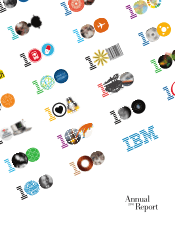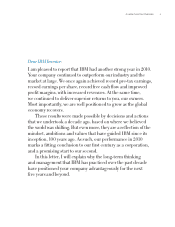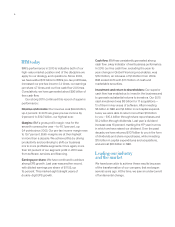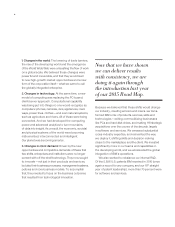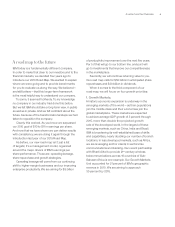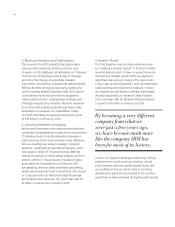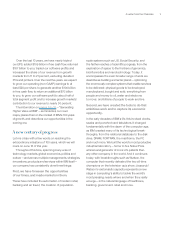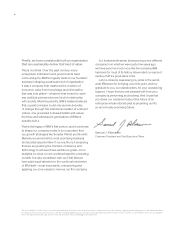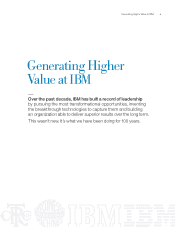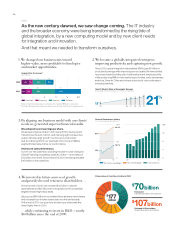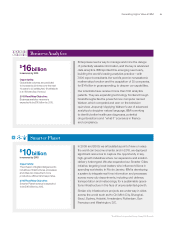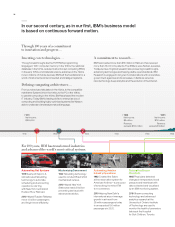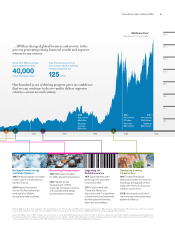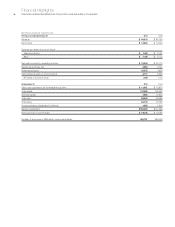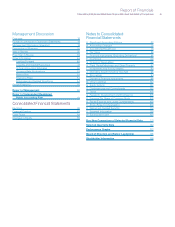IBM 2010 Annual Report Download - page 9
Download and view the complete annual report
Please find page 9 of the 2010 IBM annual report below. You can navigate through the pages in the report by either clicking on the pages listed below, or by using the keyword search tool below to find specific information within the annual report.
Over the last 10 years, we have nearly tripled
our EPS, added $109 billion in free cash flow, returned
$107 billion to you, tripled our software profits and
increased the share of our revenue from growth
markets from 11 to 21 percent, excluding divested
PCs and printers. Over the next five years, we expect
to grow our operating (non-GAAP) earnings to at
least $20 per share, to generate another $100 billion
in free cash flow, to return an additional $70 billion
to you, to grow our software profit to about half of
total segment profit and to increase growth markets’
contribution to our revenue to nearly 30 percent.
The information on pages 9 to 15—“Generating
Higher Value at IBM”—summarizes our road
maps, places them in the context of IBM’s 100 years
of growth, and describes our opportunities in the
coming era.
A new century of progress
Let me close with a few words on reaching the
extraordinary milestone of 100 years, which we will
mark on June 16 of this year.
Throughout this time, spanning many eras of
technology, markets, global economics, politics and
culture—and across multiple managements, strategies,
innovations, products and services within IBM itself—
our company has consistently done three things:
First, we have foreseen the opportunities
of our times, and made markets in them.
These have included the automation of modern retail,
banking and air travel; the creation of population-
scale systems such as U.S. Social Security; and
the farther reaches of scientific progress, from the
exploration of space to the frontiers of genomics,
bioinformatics and nanotechnology. Today, it
encompasses the even broader range of work we
describe as building a smarter planet—optimizing
the enormously complex systems that enable services
to be delivered; physical goods to be developed,
manufactured, bought and sold; everything from
people and money to oil, water and electrons
to move; and billions of people to work and live.
Second, we have created the tools to do that
ambitious work and to capture its economic
opportunity.
In the early decades of IBM’s life, this involved clocks,
scales and punched card tabulators. It changed
fundamentally with the dawn of the computer age,
as IBM created many of its technological break-
throughs, from the relational database to the disk
drive, DRAM, FORTRAN, the mainframe, the PC
and much more. We built the world’s most productive
industrial laboratory—home to five Nobel Prize
winners and generator of more U.S. patents than
any other company in the world. And it continues
today, with breakthroughs such as Watson, the
computer that recently defeated the two all-time
champions on the television quiz show, Jeopardy!
Watson’s vast analytic capacity represents a new
stage in computing’s ability to tackle the world’s
most pressing needs where and when they really
emerge—in the natural language of healthcare,
banking, government, retail and more.
A Letter from the Chairman 7

